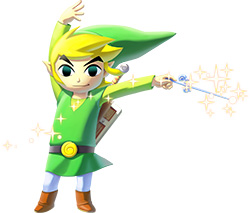Today I'll explore the diverse mechanisms I've seen commercial games use to make them replayable or longer than it takes to end the main story itself. The main idea is that players are social animals, so they talk about what they play with friends, work colleagues or their families. The longer they play your game, the longer they'll talk about it and the more likely it is their acquantices, be them physical or virtual, will buy your game too. Of course, they'd better have good things to say about the time sink you've built: bad press does
not beat no press at all in this kind of close relatipships.
Trick 1: Irrelevant secrets
Hide things not that relevant to the main story around, like ammo, modified weapons or photos of the development team. Players will spend a long time checking for secret walls or trying weird stuff. If their wild ideas succeed from time to time, they will keep at it. Otherwise, they'll stop trying and focus on the main game.
Pros: Easy to add.
Cons: They must be placed around evenly. Too many secrets or too few in one region of the world can create false expectations.
Examples: Any game with hidden power-ups or easter eggs.
Trick 2: Added background
Hide stuff which gives some insight into the world, the enemies or allies, which is not essential to ending the game. Jokes and logs fit well here.
Pros: Easy to add, since most of it should already be in the game reference documents. Role players love stuff like this.
Cons: Do not break the continuity. These extra dots in the drawing must be perfectly alligned with the ideas presented in the main game.
Examples: System Shock, FEAR, Baldur's Gate, Riven.
Trick 3: Super-objects
Hide game breaking equipment or abilities. Make most of them really hard to discover and even harder to obtain. If they are painfully boring to get, much better.
Pros: Bragging about the übersword feels so good.
Cons: Requires creating new items and/or puzzles. Most players are not willing to spend hours trying to achieve a secondary element.
Examples: Final Fantasy (VII, IV, V, VI, VIII, IX, X, XII...), Deus Ex.
Trick 4: Super-enemies
Add and extra challenge by including side missions with hellish fiends.
Pros: Once again, bragging rights. This comboes with Trick 3.
Cons: Make sure players understand they are not required to kill them and keep them away from the average player's path, or they will be very upset. Designing god-like monsters which can be killed requires a great understanding of your world's rules.
Examples: Final Fantasy, Castlevania.
Trick 5: Challenges
Add challenge rooms independent from the game whose only purpose is testing the player's ability. Time attacks or score rankings can hook players for a long time.
Pros: These are relatively easy to implement. Discarded levels, as well as parts of game sections can be reused.
Cons: It relies completely on your game being absolutely fun to play.
Examples: Batman: Arkham Asylum, Braid, Lara Croft and the Temple of Light.
Trick 6: Completion marks
Fill the world with riddles or puzzles which are there just to be solved. Nothing is earned from solving them, save reaching the desirable 100% completion.
Pros: They can be easily added to almost any kind of game.
Cons: If they don't integrate well with the world, the suspension of disbelief is at risk.
Examples: Batman: Arkcham Asylum, Castlevania (map completion).
Trick 7: On-line
Story be damned. Let's shoot at other players in the same maps until the end of times.
Pros: It works, often.
Cons: Competence is legion. Creating this along a single player experience is like building two different games with shared assets.
Examples: Call of Duty, Metal Gear Solid 4.
That's for no replayability at all. Now, how about starting the game again...















